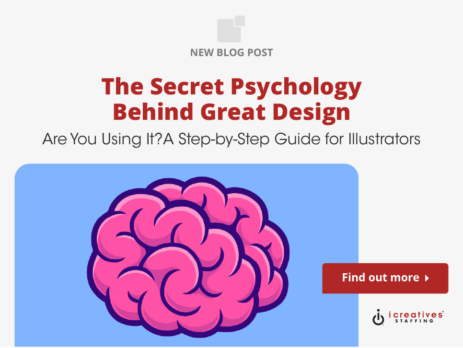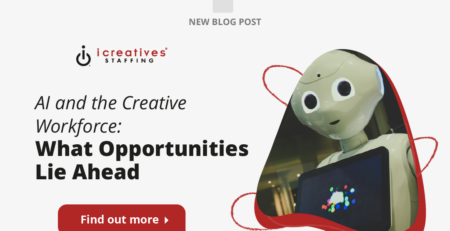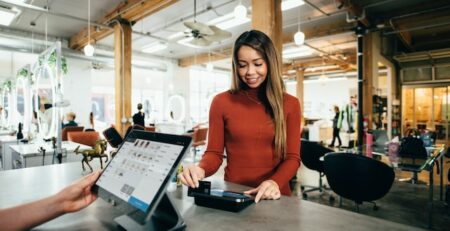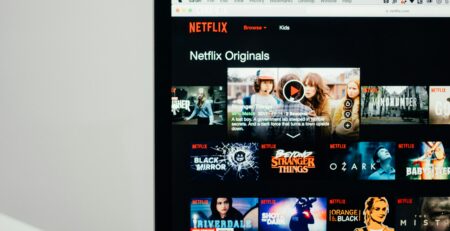The Secret Psychology Behind Great Design – Are You Using It?
Design is not just about aesthetics; it’s a multifaceted discipline that intertwines with human psychology at its core. The most impactful designs are those that effectively communicate with the viewer, not just visually but emotionally and psychologically. Understanding the underlying psychological principles can greatly enhance the effectiveness of your design work, whether it’s in digital media, product design, or visual arts.
Great design does more than catch the eye—it makes us feel, think, and react. It can persuade, evoke emotions, and even alter behavior. By leveraging psychological principles such as color theory, typography, and spatial relationships, designers can create more engaging and intuitive experiences. This article delves into how these elements are used in design and why they work from a psychological perspective.
Whether you are a seasoned designer or just starting out, applying psychological principles can elevate your work from good to unforgettable. It’s about understanding how people perceive and interpret visual information, making decisions based on this understanding, and using it to influence audiences in intended ways.
From the colors that trigger specific emotions to the shapes that denote trust and stability, every element in a design has the potential to impact the viewer’s psyche. This connection between design elements and psychological response is what makes the study of design psychology not just fascinating but essential for creating compelling, effective work.
Let’s explore the most asked questions about the secret psychology behind great design and uncover whether you are effectively using these strategies to captivate and influence your audience.
Most Asked Questions About Design Psychology
- What psychological principles are most commonly used in design?
- How does color psychology influence brand identity and consumer behavior?
- What impact does typography have on user perception and behavior?
- How can spatial relationships in design enhance user engagement?
- Are there ethical considerations in using psychology in design?
Psychological Principles Commonly Used in Design
Design is deeply rooted in psychological principles that help predict and influence human behavior. Understanding these principles can significantly enhance the effectiveness of your designs. Here are some key psychological concepts applied in design:
- Gestalt Principles: These principles deal with how humans perceive patterns and objects as whole forms rather than just a collection of individual elements. They include similarity, continuation, closure, proximity, figure and ground, which help designers create cohesive and comprehensible visual compositions.
- Color Psychology: Colors have the power to evoke emotions and set the mood of a design. For example, blue can induce calmness and trust, while red might evoke energy and urgency.
- Typography: The style, arrangement, and appearance of text can significantly affect how information is perceived and acted upon. Typography can affect readability, mood, and even the trustworthiness of the information presented.
- Fitts’s Law: This law predicts that the time required to rapidly move to a target area is a function of the ratio between the distance to the target and the width of the target. This principle is crucial in user interface design, particularly in determining the usability of webpages and apps.
By integrating these principles, designers can create more intuitive and psychologically engaging designs. For further exploration of how these principles apply in professional scenarios, consider reading about top UX/UI design tools that facilitate the application of psychological principles in digital design.

Color Psychology in Brand Identity and Consumer Behavior
Color psychology is a powerful tool in the arsenal of a designer, particularly when it comes to branding and marketing. The colors chosen for a brand can influence perception and behavior, making it a critical decision in brand strategy.
Here’s how different colors can affect brand identity and consumer behavior:
| Color | Emotional Response | Common Usage |
| Blue | Trust, Security | Finance, Technology |
| Red | Excitement, Urgency | Sales, Food Industry |
| Green | Health, Tranquility | Environmental Products, Wellness |
| Yellow | Optimism, Attention-grabbing | Warning Signs, Promotions |
Understanding the psychological impact of color can help designers create more effective brand identities that resonate with their target audience. For more insights into how color influences consumer behavior, this guide on transforming marketing with creative strategies might be helpful.
Impact of Typography on User Perception and Behavior
Typography is not just about making words legible; it also plays a crucial role in the emotional and psychological impact of a design. The choice of typeface, size, spacing, and color can all influence how information is perceived and the actions that people take after reading it.
For instance, serif fonts are often perceived as more formal and traditional, while sans-serif fonts are seen as more modern and approachable. This perception can affect user behavior, such as the credibility they assign to the content or their willingness to engage with it.
Effective typography enhances the readability of content, guides the reader’s attention, and ensures a seamless flow of information, which is essential in holding the user’s engagement. To delve deeper into how typography shapes user experience, consider exploring strategies for hiring creative writers who understand the nuances of typographic emotional influence.
Spatial Relationships in Design to Enhance User Engagement
The arrangement of elements within a space can significantly affect how content is perceived and interacted with. Spatial relationships in design refer to how objects are placed in relation to each other and to the design space as a whole. These relationships can guide the viewer’s eye and create a visual path that enhances user engagement.
For example, aligning elements to form a visual hierarchy can help prioritize information and guide the user through the content effectively. Similarly, adequate spacing (or white space) can reduce cognitive load, making the information more accessible and easier to digest.
Understanding and utilizing spatial relationships can greatly improve the usability and aesthetic appeal of a design, making it not only visually pleasing but also functionally superior. For more on enhancing user experience through design, check out how UX and UI work together to create seamless user interactions.
Ethical Considerations in Using Psychology in Design
While using psychological principles in design can greatly enhance effectiveness, it also raises ethical questions. Designers have the responsibility to use these tools wisely and not manipulate users or promote harmful behaviors.
Ethical design means considering the impact of your work on users and society as a whole. It involves being transparent about the intent of your designs and ensuring that they contribute positively to user experience without compromising privacy or autonomy.
For those interested in exploring the ethical dimensions of design further, mastering job interviews in the creative field often involves discussing how to balance business objectives with ethical design practices.
Conclusion
The intersection of psychology and design is a fascinating area that offers designers a powerful toolkit for influencing user behavior and enhancing the user experience. By understanding and applying the psychological principles discussed in this article, designers can create more engaging, intuitive, and effective designs.
Remember, the goal of incorporating psychology into design should always be to improve the user experience and contribute positively to the world through thoughtful, responsible design practices. As you continue to explore and apply these principles, always consider the ethical implications and strive to use your skills for the betterment of all.
In today’s competitive market, finding the right creative and marketing expert can be a challenge. But with icreatives, you’re in experienced hands. With 37 years in staffing and a track record of matching more than 10,000 employees to over 1,000 companies worldwide, we know how to connect you with the best. Plus, you only pay if you hire—there’s no risk, only results. Ready to find your perfect creative or marketing expert? HIRE WITH ICREATIVES today!











